 Hi, I'm Heidi and I homeschool my two sweet kids. I want them to know that learning is an exciting lifelong adventure! We love great books, unit studies, notebooking, lapbooking, and hands-on learning.
Hi, I'm Heidi and I homeschool my two sweet kids. I want them to know that learning is an exciting lifelong adventure! We love great books, unit studies, notebooking, lapbooking, and hands-on learning.The Best Way to Garden with Kids
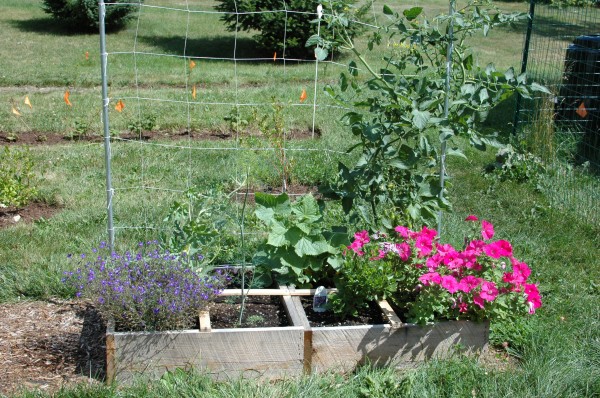
I enjoy gardening and wanted to share it with my kids. Why? Well, it gives them a connection to nature and where their food comes from. It’s another chance to teach a little work ethic and responsibility and the rewards that come with following through. Then there are the science lessons learned in the real world with a hands-on activity that is a lifelong interest for many people. So, have I persuaded you to give it a try with your children yet?
Right about the same time my kids were the perfect age to start gardening I discovered my favorite way to grow vegetables, Square Foot Gardening. Square Foot Gardening (SFG) has allowed me to have the most success in vegetable gardening with the least amount of work. If you’ve not heard of it, visit the Square Foot Gardening website. Their website is loaded with information, and then if you’re really interested I would read Mel Bartholomew’s most recent SFG book. In short, Square Foot Gardening is raised bed gardening in an easy-to-make soilless mix with the space divided by a grid into one foot squares. It cuts down on weeds and watering and is incredibly easy to manage.
Now for the part about gardening with kids: Square Foot Gardening is also (in my humble opinion) the best way to garden with kids for two main reasons:
#1. They get their own garden space. This is much more exciting and motivating than helping Mommy weed her garden. They get to choose what to plant. Being able to make the choices has been paramount in holding my kids’ interest. However, with this right comes the responsibility to weed and water their plants. You could give a very small child one square; my children each get four squares to call their own. We start daydreaming of what to put in our squares as soon as the seed catalogs arrive. We talk about the successes and failures of previous choices. We determine which items would need to be directly planted by seed into the garden and which would need to be started before the season. My girly-girl wants to grow mostly flowers, and that is okay. It’s her spot to plant as she wishes!
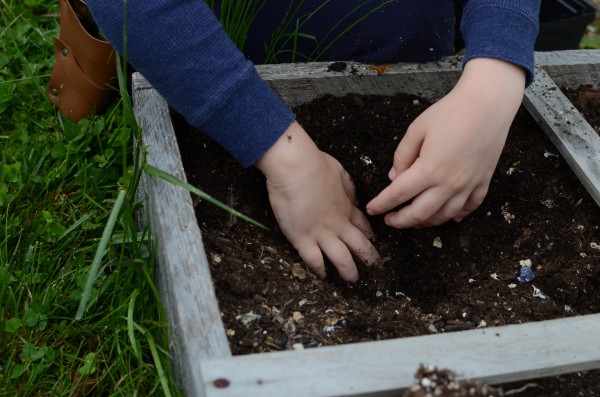
#2. They truly can do all the work for their garden on their own. The soilless mix is divine. Year after year it stays loose and easy to work with, able to be mixed simply with your hands (my son’s choice) or a small garden trowel (my daughter’s preference). Planting is easy because of this, and so is weeding. Since you aren’t starting with weed seeds in your mix you get very few weeds anyway, and the ones you do are easy to pull out with an gentle tug, root and all (you can see the tiny weed my son pulled and it’s long root in the photo below). The grid involved in square foot gardening is the key here: with it even young children can see which is the plant and what are weeds.
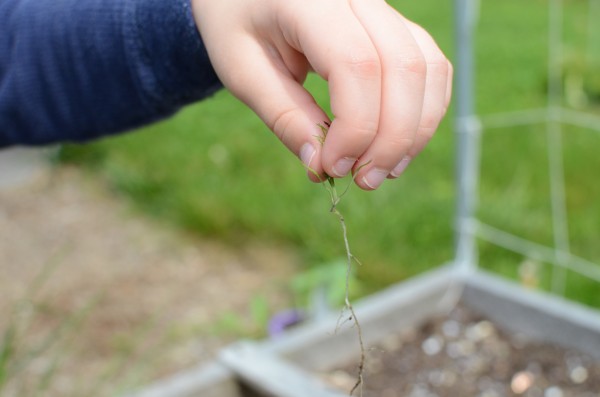
This is our third year gardening with Square Foot Gardens, and I am still in love with it. It makes gardening manageable and fun, and my children take great pride in their squares. I’ll never forget the night we had dinner with another family and my daughter could proudly say that she grew the tomatoes for the salad!
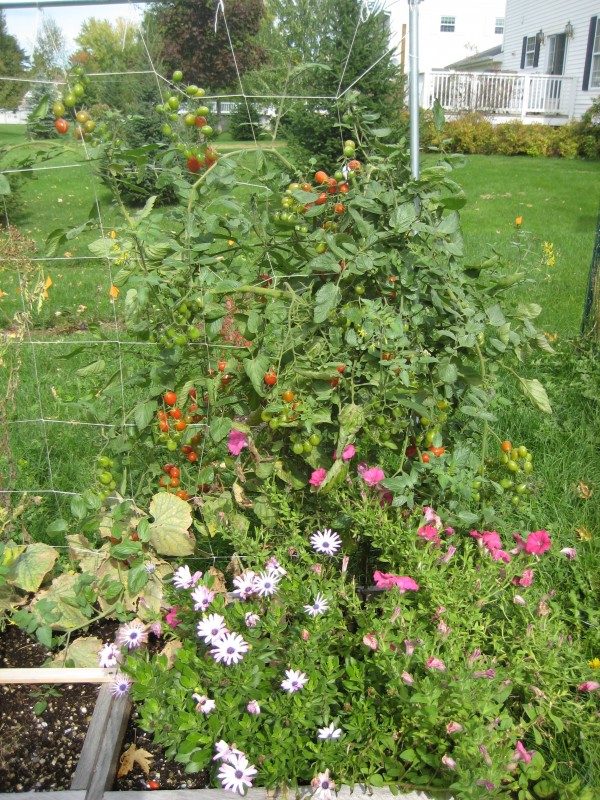
Year-Round Schooling

We are emphatic fans of year-round schooling. We started homeschooling when our daughter finished her year in public school, which meant we actually started in the summer at the beginning of July. It was a way to break us all into the homeschooling routine and both my kids were excited to see what it would be like. We did the equivalent of about two days a week of school, usually broken up as a couple hours here and there.
What did we do that first summer? We focused mostly on unit studies: a big one on the American Revolution and smaller ones on wildflowers and the ocean. We didn’t crack many workbooks, though my daughter did start a transition to cursive handwriting book (per her request). There was a lot of interest-led nature study as we found bugs or birds and wanted to learn more about them. Special summer activities like our library’s summer reading program couldn’t be missed, and other events like a Revolutionary war reenactment (how perfect!) or a visit to the remains of a fort once occupied by the British made perfect field trips. It was a fun summer and gave me a chance to figure a few things out. I was also amazed at how much the little bit of scheduling and doses of concentration and learning helped them do well when I wasn’t working with them. We had almost none of the “I’m bored…I don’t know what to do…” That certainly was a nice side effect! Then, after Labor Day when the public schools went back into session we still celebrated an official “First Day of School” with photos and a special breakfast. That was when we started a roughly four-day school week schedule.
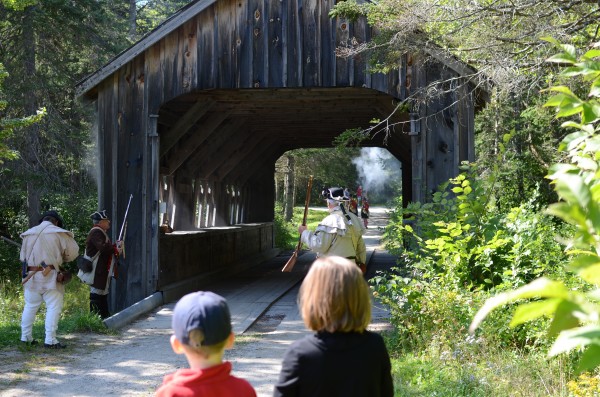
There are countless reasons this is a great fit for our family. Like I mentioned, it helps keep them engaged and prevents boredom over the summer. It eliminates the need to have drastic schedule changes that are hard to adjust to for children. It also prevents the “summer slide” children can face in math and reading over the summer. Probably my favorite part is the easing of our school-year schedule: it allows us to have a four day school week, and also take a larger break at Christmas and smaller breaks whenever we want (or need) them. Then again, perhaps my favorite part is the emphasis on learning as a life-long adventure: why would we want to stop something we love for the whole summer? Learning is exciting and fun and we would miss it!
The other piece that makes this work well for us is how I count the days. In Maine we are required to have 175 days of school per school year. I prefer counting days we do in the summer towards the next year–it makes me feel like we’re getting ahead instead of working to finish up what we didn’t get done during the school year. This is a big mental help for the kids, too. They are excited that we will finish this school year before Memorial Day (when public schools in our area still have three weeks left). The important part for them is that they will finish Kindergarten and 3rd grade so over the summer they will be working on 1st and 4th grade work. I know it is semantics really, but it means a lot to them when other kids or adults ask them what grade they are in!
I’m putting the finishing touches on our plans for this summer, so check back in for the details.
Master Math Facts with XtraMath
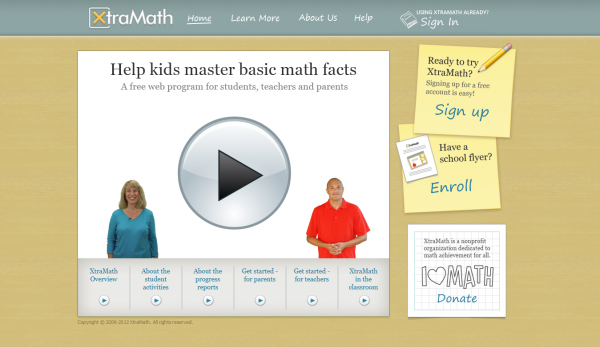
While working with my daughter on third-grade level math I noticed early on that her basic addition and subtraction math facts were not as solid as they should be. We were beginning work on memorizing multiplication tables, but I wanted to shore up addition and subtraction before she ventured into higher level math.
But you see, I don’t really want to sit with my daughter going through flashcards. I could be planning our next unit study, finding an educational field trip for us to go on, or even scooping out the cat litter box. I’ve had my daughter work with flashcards on her own, and even had her make her own flashcards. She was bored and we noticed very little benefit for the time invested. Reading some comments on the Pioneer Woman homeschooling blog led me to XtraMath. I am in love, and have passed this site on to everyone I know, whether homeschooling or not.
XtraMath is a nonprofit organization “dedicated to math achievement for all.” The nonprofit part is great because the site has no ads, which are a visually distracting problem with many of the more game-like online math sites I’ve looked at. The site design is clean, and it’s quick and easy to sign up. I had my daughter do the initial assessment and she did indeed need more practice in addition and subtraction math facts.
How does Xtramath help with math facts? It is basically a computer-generated math facts drill. Each answer is timed: answer in three seconds and you get a smiley face, answer in under 10 seconds and you get a green check mark, answer incorrectly and it will show you the correct answer (which you have to type in to move on), wait longer than 10 seconds and it shows the answer but you still have to type it in to move on. Being a computer that can think faster than a homeschooling mom, it knows which problems the student needs more work on and when to ask them.
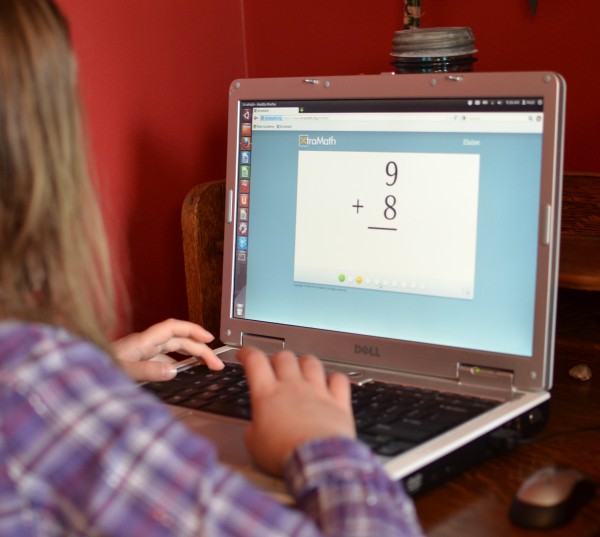
So why am I in love? It’s free. It takes her about 10 minutes each day. It is a daily math facts drill that I fully believe will strengthen her facts so she’ll be ready to tackle higher level math without stopping to figure out 8 + 7. Oh, and I don’t have to drill with her but I do get an email each week with her progress. That’s helpful because even when she says she doesn’t like it, I can point out her progress since the initial assessment and she has to agree that it is working.
Take a few minutes and watch the videos on the bottom of their homepage. They’re just over a minute each but give you an overview of how their program works, what information is in the progress reports, and how to sign up. It’s painless, free, and will make sure your little mathematician has the building blocks necessary to dive into fractions, long division, and everything else coming their way.
Maple Syrup Study Finished
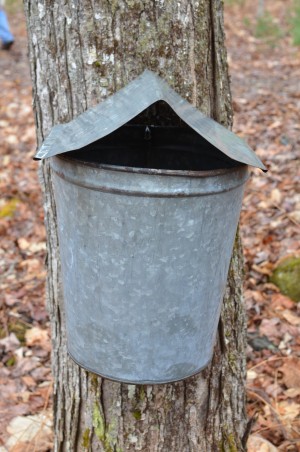
We started a maple syrup unit in March with a field trip to a local farm on Maine Maple Sunday. We worked on this unit for two months, partly because there was a lot involved in the study, and partly because we had a lot of activities and other schoolwork going on. It was an educational (and tasty!) study. You can read all about our Maple Syrup Unit on our Unit Studies page, where you’ll find the resources I used and pictures of our completed lapbooks.
We celebrated finishing this week by making Sugar-on-Snow. We felt a bit like Laura Ingalls (well, other than using crushed ice from our ice maker instead of snow from outside)! We used a recipe from The Maple Syrup Cookbook by Ken Haedrich, except I did a smaller batch of it in the interest of healthy eating and low dental bills. It got a big thumbs-up from my kids. Possibly because their teeth were stuck together so they couldn’t actually say anything.
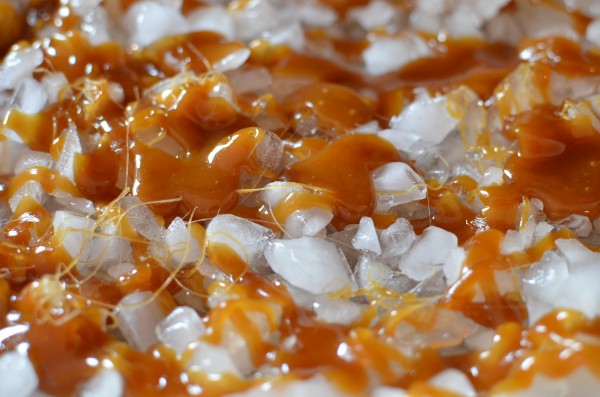
We had been working on this study for so long that we were a little sad to finish it. We enjoyed everything from the field trip to the sugarshack, cooking with maple syrup, and learning all about the science and history of maple tapping. The lapbooks turned out beautifully, and we’ll never pour syrup over our morning pancakes without thinking about all we learned!
Teaching Coin Recognition
As a homeschooling mom, nothing beats the feeling of finding something that works for your child. We’d been working on recognizing the different coins and how much they were worth with our six-year-old son. Our son is definitely a hands-on learner so I knew worksheets wouldn’t work. I found a way to play store and learn all about coins that didn’t cost a thing and doesn’t take a lot of time to prepare or play! The silly part is all the other things I tried first.
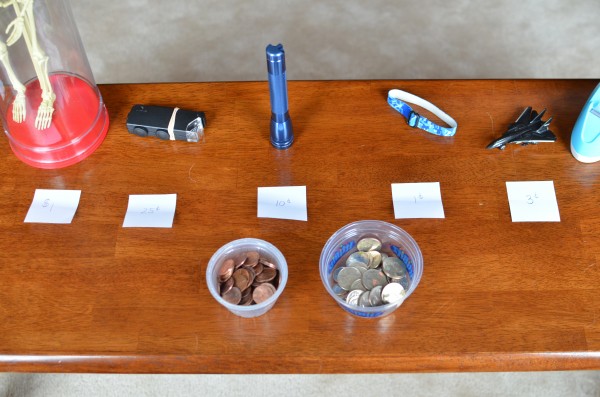
Take one: I was really patting myself on the back with this great idea. I took a big, neon sheet of poster board and secured all the different coins to it. Beside each coin I included a bag with the number of coins needed to make $1.00 to give a visual example of the values. Both my husband and I tried breaking out my beautiful poster with our little guy to no avail. He would just randomly guess coin names and values, not engaged or learning.
Take two: computer games and apps. He adores electronics, and we often find they work well for teaching him a new concept. He figured out addition after 10 minutes with a free computer game (Tux Math), after I had tried the pencil-and-paper route for a week. So we went on the search for games and apps. The problem? They wouldn’t start basic enough, but all tended to jump into adding coins together or making change. Some even made it easy to “guess” by just clicking on coins until you got to the right amount, and we find he’ll take the easy way on those kinds of games. Hmmm.
Third time’s a charm! Finally one day I grabbed a dozen small items from our house, a pack of sticky notes, and the cups of coins we keep for playing games. (I’ve disinfected them. Yup, I’m a germaphobe.) I laid the items out on the bench with a sticky note price tag. He was so excited it cracked me up! I mean, these were just household items and he didn’t even get to keep them. He worked on choosing the right coin and “paying” for the item. He had to tell me the name of the coin when he paid.
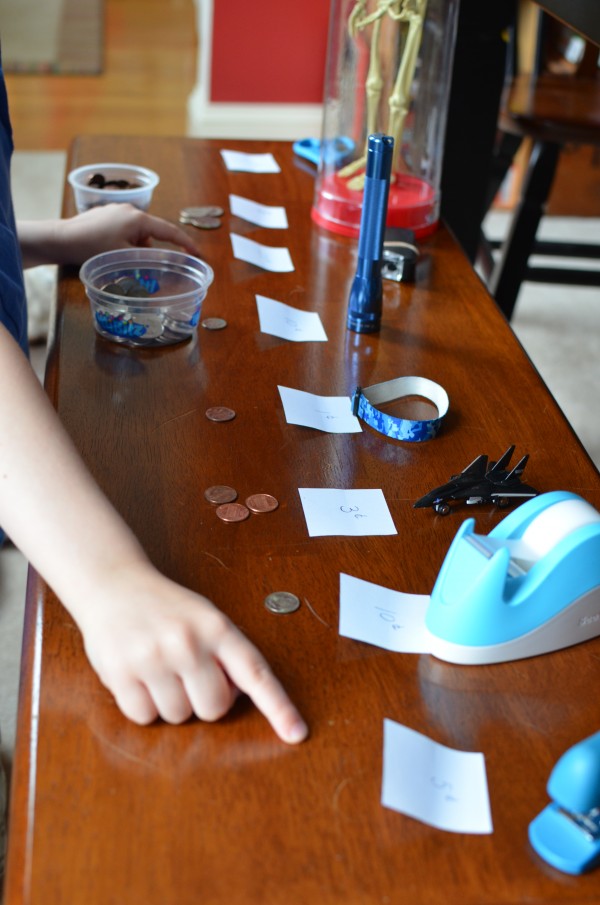
I’m obviously not the first one to try this and some of you may think: “Hello? You tried other things before this?” I suppose I thought it would take more time to prepare and longer to “play,” and be too boring with common household items. I figured it would have to be more complicated to work. (Which, incidentally, is a common problem for me!) The real beauty of it is how easily it grows with his knowledge. Already I throw him curve balls where he needs more than one coin. It’s tricky because skip counting by 5’s and 10’s is not strong for him yet…but he’s motivated to learn by this simple game.




